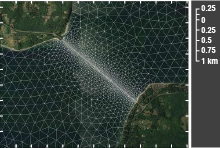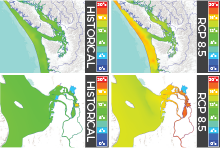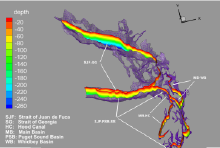SSM Water Quality
Overview
Conventional water quality pertains to parameters such as dissolved oxygen (DO), pH, total suspended solids, turbidity and other parameters associated with the biogeochemical cycles of nutrient consumption and primary production. These parameters are simulated by the Salish Sea Model. The model use has thus been initiated to test the sensitivity of conventional water quality parameters to local anthropogenic changes to the system induced by population growth or construction and development. The model is also being used to assess the impacts to water quality from natural and global changes such as sea level rise and climate change.
Projects

Hood Canal Bridge: Environmental Impact Assessment - assessed the impacts of the world's third-longest floating bridge in relation to salmon migration and mortality, along with broader ecosystem impacts.

Simulation of Salish Sea Climate Change and Sea Level Rise - application of the Salish Sea Model to assess projected future climate impacts in the estuarine environment of Puget Sound on a smaller, sub-basin scale.

Puget Sound Dissolved Oxygen - simulating algae growth, dissolved oxygen, and nutrient dynamics in Puget Sound to inform potential Puget Sound-wide nutrient management strategies.